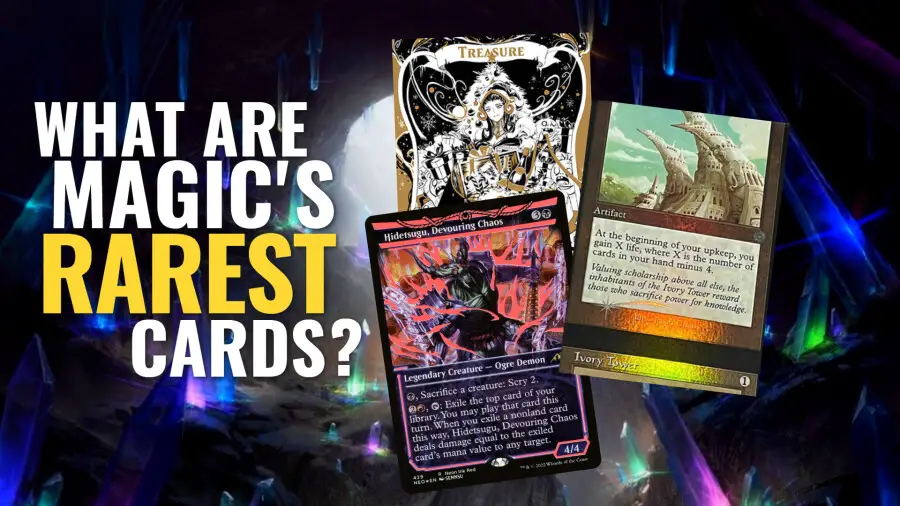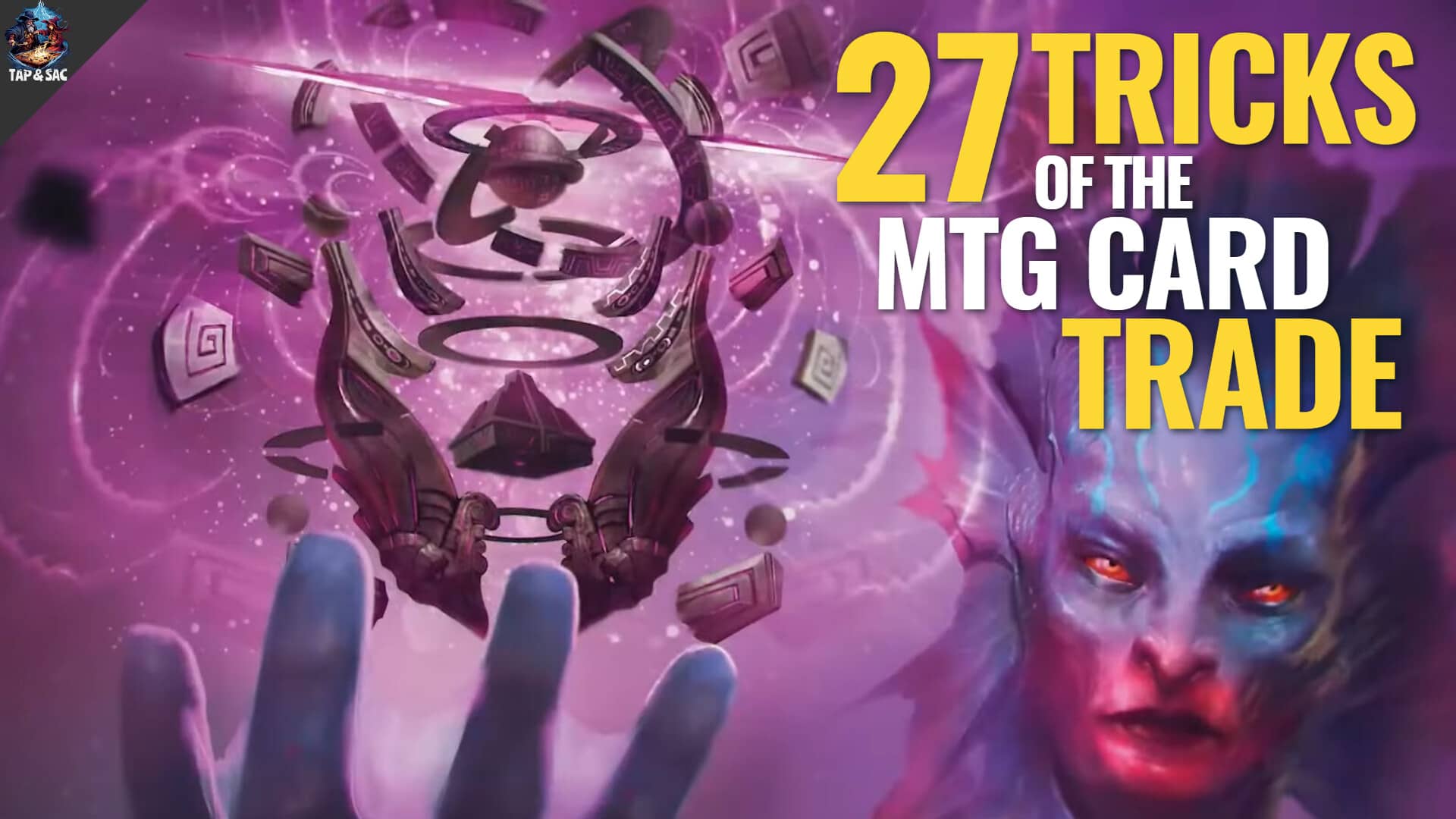It wasn’t too long ago where Magic: the Gathering consisted of just Draft Booster packs containing regular frame cards with an occasional foil version. In fact, it was only in 2019 when all manner of rarer art or frame variants started showing up. Everything you can imagine has or will probably be seen in on a Magic card soon enough.
It’s been a few years since the floodgates opened up, and while some of these new initiatives have fallen by the wayside, a handful of them have gained notoriety and even obscene price tags because of their rarity.
Although various promos and one-offs have been around since Magic began 30 years ago, let’s take a look at some of the rarest, one-in-a-million, Magic cards recently released and put an estimated value on them:
Soldier/Angel/Zombie Plastic Tokens – Est. 500+ Copies Each
These promotional cards stand out because they are likely the very first plastic cards ever made for sanctioned event play. Each of the 3 original tokens are much thicker than regular cards, and built out of a translucent hard plastic to allows the stained glass effect to shine when light passes through. Artwork from these tokens also merge to form a panoramic mural.

These token cards were not for sale, but rather given as a gift in the Asia Pacific region for those who spent a certain amount on qualifying products. As these were in limited quantity, each local game store (in Singapore) received at least 8 copies to give away. Multiplying that by an estimated number of stores in the region, we estimate around 500 of each token were made.
Being tokens, they’re usable but not highly desirable. Nevertheless they are rare, visually striking and unique, and can still fetch a decent price for anyone who wishes to cash out.
Estimated Value: US$25 – US$50
Serialised Retro Frame Foil Artifacts – 500 Copies
Magic released their very 1st serialised cards found in sealed products, in 2022’s The Brothers’ War. These serialised cards were only found in Collector Boosters, and exclusively for the retro-frame Artifact series. Some notable reprints in the series wereMox Amber, Platinum Angel and Wurmcoil Engine, all of which did not previously have a retro-frame printing.
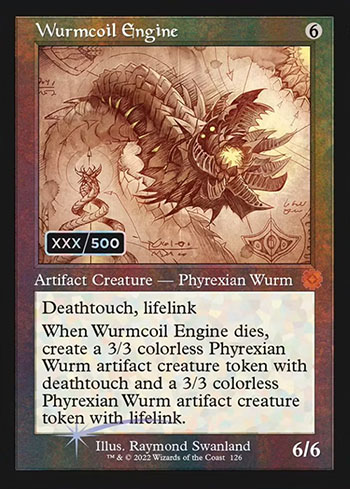
A total of 63 Artifacts were selected for the retro-frame series, hence with 500 serialised foils each, that’s a total of 31,500 out there in the wild. Early feedback claims a 1% chance of pulling it from a Collector Booster pack, with some touting 1 or 2 copies in a Collector Booster case (that contains 8 boxes). As Collector Boosters are also the most expensive tier of Magic products, collectors are willing to pay extra to remove that risk.
Estimated Value: Between US$200 – US$2,000 depending on rarity and playability.
Transformers “Shattered Glass” Alt Art Foils – Est. 500 Copies Each
It looks increasingly likely that every new Magic set from 2023 onwards will have an ultra-rare series, and in The Brothers’ War, Wizards decided to include 2 collections instead. Apart from the serialised Retro Artifact cards, one could also find Shattered Glass Alternate Art versions of the 14 Transformers. These oddly did not have serial numbers on them, but have the same 1% pull rate like the Retro Artifacts.

While the Shattered Glass variants are all equally rare, the popular leaders Optimus Prime and Megatron are the clear price leaders in price, each listed upwards of US1,500, while less desirable (and less powerful) bots are sub US$500. These are still very early prices, and it could fall as time goes on and more are released into the market.
Estimated Value: US$250 – US$2,000
Gold Alternate Art Treasure Foil Token – 150 Copies
An exclusive promo card given away by Wizards’ Asia Pacific team, this Treasure token featured commission art by Rachta Lin and was mostly given away by participating in marketing and social media promotions. As far as we know, none were available as a purchase gift, unlike the plastic token cards (mentioned above) that were given free if you spent a minimum threshold at participating game stores.
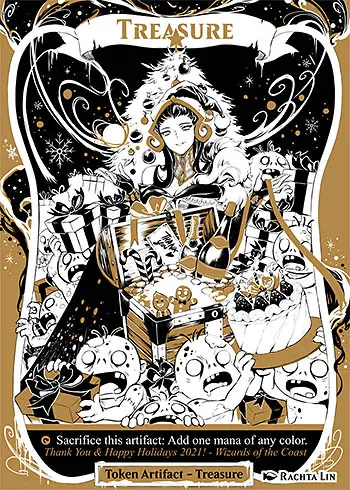
Only 150 copies of the Gold Treasure tokens were made, and they were also serialised to show authenticity. Because it was only virtually accessible to the Southeast Asia region, they are hard to come by and naturally command a sweet premium whenever the occasional one appears for sale.
Estimated Value: US$2,000 – US$4,000
Kamigawa’s Neon Ink Foil Hidetsugu – Unknown Numbers but Very Rare
A very special, glow-in-the-dark foil variant was introduced in 2022’s Kamigawa: Neon Dynasty, and could only be found specifically for Hidetsugu, Devouring Chaos. While the card itself isn’t particularly good outside of being a Commander, its neon-ink foil came in 4 different colours – yellow, blue, green and red. Wizards didn’t specify the distribution between each colour, but collectors claim that red is the hardest to find, and yellow being the easiest.
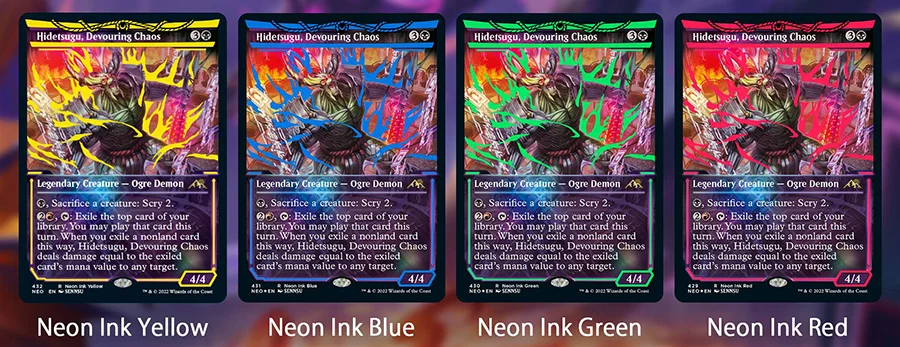
As you would have guessed, these Hidetsugu neon-ink foils could only be found in Collector Booster packs, and regardless of colour were considered extremely rare. Like many other high-end lottery cards, Wizards touts a 1% chance of pulling them from a Collector Booster. Many collectors and content creators who opened multiple boxes have only seen 1 in at least 10 boxes.
Estimated Value: US$80 (yellow) – US$1,600 (red)
Viscera Seer Foil Reversed Print – 100 Copies
The granddaddy of serialised cards came to life in the world of Magic: the Gathering in 2001, as a surprise gift for anyone who purchased the Foil Phyrexian Praetor: Compleat Edition Secret Lair box set. Strangely only the foil set of that Secret Lair had the potential to open 1 of these rarities.

Not only is each of these Viscera Seers numbered from 1-100, they were also printed backwards to give a pseudo sense of a misprint. Misprints are a niche but significant force of the collector’s world, and the backwards text gives an extra veneer or rarity. Below we’ll go in a little bit about some really rare reprints that can command a high premium
Estimated Value: US$2,500 – US$5,000
Crimped and Miscut Rare Cards – <100 Each
In every release since the dawn of the game, there are bound to be technical misprints due to machine fault. You might think modern day technology would reduce the rate of such occurrences, but many still show up in today’s products. Because these misprints are up to chance, there are varying degrees of misprints, from the amount of crimping (the stamping and sealing process that machines use to seal packs) visible on the card, to how much of another card can be seen in a miscut card.
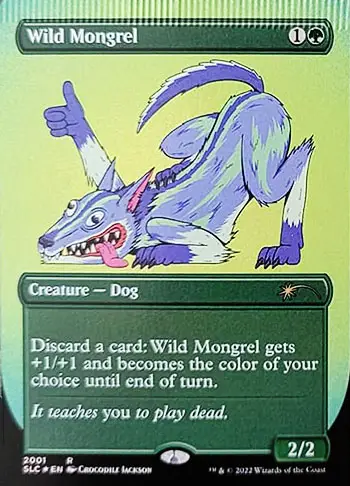
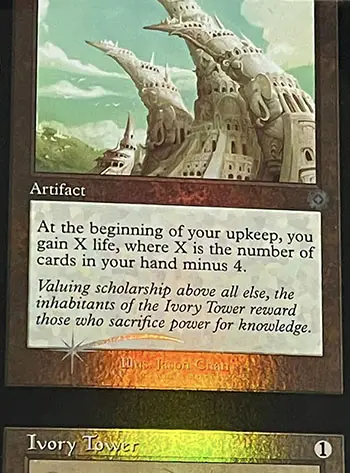
There also really isn’t an official price list for misprint cards, since each one has to be assessed individually. Generally bigger errors and high playability of the card itself will fetch a larger premium, and baseline for any kind of misprint is around 10x of a normal card.
End Step
The early 2020s have been a watershed moment for Magic collectability, and with the current trend of increased products and limited-edition series cards, expect to see much more in the years ahead. It’s almost a given that there’ll be more serialised cards, and very likely new foil variants too. Some of these rare cards can be seen as investment tools, with a good chance of appreciation in the long run.
Only collectors with the deepest pockets will be able to get them all, so casual players shouldn’t feel discouraged. The game grows ever more complex, but the foundational aspects that make the game fun are still there. Build new decks that you’d like to play with whatever cards you have at your disposal, gather with your Magic buddies, and all will be well.

